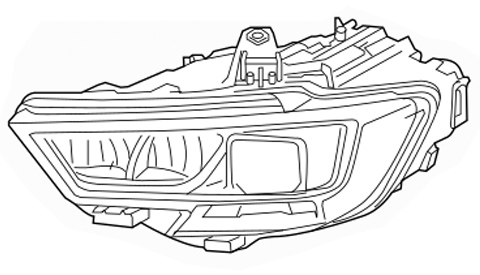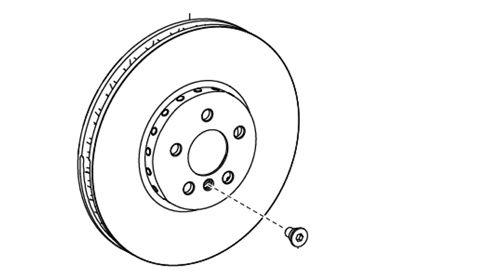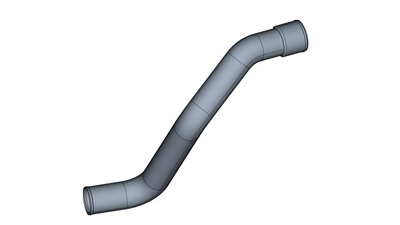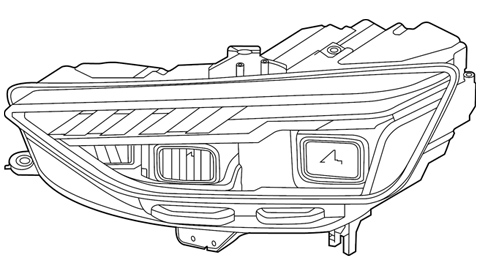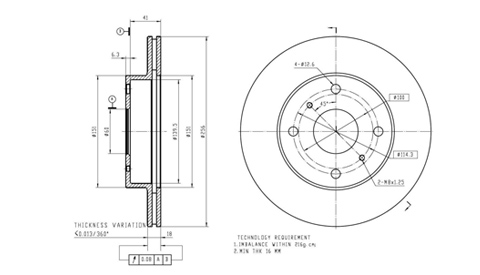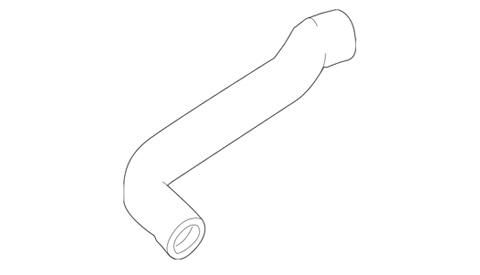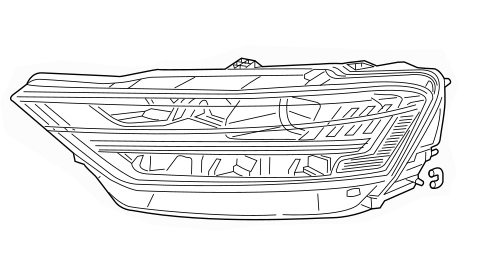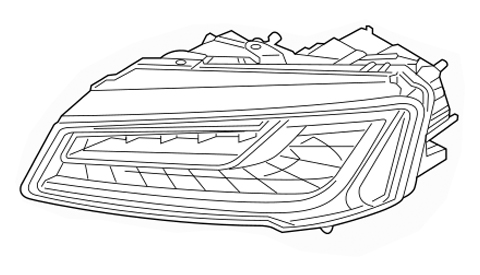-
Array
(
[0] => Array
(
[id] => 1
[siteid] => 1
[parentid] => 0
[parentstr] => 0,
[infotype] => 0
[classname] => Home
[navname] => Home
[alias] =>
[english] =>
[linkurl] => /
[relinkurl] => index.html
[picurl] =>
[picwidth] =>
[picheight] =>
[colorval] =>
[boldval] =>
[seotitle] => Automotive Lamp suppliers,Led Headlight solutions,Luz Led Para Moto price,Headli
[keywords] => Automotive Lamp suppliers,Led Headlight solutions,
[description] => IV Auto Parts is a Automotive Lamp suppliers, provides Led Headlight solutions,Luz Led Para Moto price,Headlights For Car fittings.
[orderid] => 1
[isnav] => true
[checkinfo] => true
[url] => index.html
[child] => Array
(
)
)
[1] => Array
(
[id] => 2
[siteid] => 1
[parentid] => 0
[parentstr] => 0,
[infotype] => 0
[classname] => About Us
[navname] => About Us
[alias] =>
[english] => We Make Fence Idea
[linkurl] => about.php
[relinkurl] => about.html
[picurl] =>
[picwidth] =>
[picheight] =>
[colorval] =>
[boldval] =>
[seotitle] => Car Head Lamp Agencies,vehicle Headlamp Wholesale,car Head Lamp Price; IV Auto P
[keywords] => car head lamp agencies,vehicle headlamp wholesale,
[description] => IV Auto Parts, built in Hongkong and based in mainland China, has specialized
in developing and exporting high quality fencing system since 2009.
[orderid] => 2 [isnav] => true [checkinfo] => true [url] => about.html [child] => Array ( [0] => Array ( [id] => 10 [siteid] => 1 [parentid] => 2 [parentstr] => 0,2, [infotype] => 0 [classname] => Our Culture [navname] => Our Culture [alias] => [english] => [linkurl] => about.php?cid=10 [relinkurl] => about-10-1.html [picurl] => [picwidth] => [picheight] => [colorval] => [boldval] => [seotitle] => [keywords] => [description] => [orderid] => 10 [isnav] => true [checkinfo] => true [url] => about-10-1.html [child] => Array ( ) ) [1] => Array ( [id] => 11 [siteid] => 1 [parentid] => 2 [parentstr] => 0,2, [infotype] => 2 [classname] => Our Team [navname] => Our Team [alias] => [english] => [linkurl] => team.php [relinkurl] => team.html [picurl] => [picwidth] => [picheight] => [colorval] => [boldval] => [seotitle] => [keywords] => [description] =>
We have been supplying Replacement Headlight assembly,Side Light,Tail Lights,driving Lights,Led Fog,Interior Light,Light Accessories,since 2009, and thanks to the contribution of our professional team, customers across the world thumb up to IV Aut [orderid] => 11 [isnav] => true [checkinfo] => true [url] => team.html [child] => Array ( ) ) [2] => Array ( [id] => 12 [siteid] => 1 [parentid] => 2 [parentstr] => 0,2, [infotype] => 0 [classname] => Reference List [navname] => Reference List [alias] => [english] => [linkurl] => reference.php [relinkurl] => reference.html [picurl] => [picwidth] => [picheight] => [colorval] => [boldval] => [seotitle] => [keywords] => [description] => [orderid] => 12 [isnav] => true [checkinfo] => true [url] => reference.html [child] => Array ( ) ) ) ) [2] => Array ( [id] => 3 [siteid] => 1 [parentid] => 0 [parentstr] => 0, [infotype] => 2 [classname] => Warranty [navname] => Warranty [alias] => [english] => [linkurl] => warranty.php [relinkurl] => warranty.html [picurl] => [picwidth] => [picheight] => [colorval] => [boldval] => [seotitle] => Halogen Headlamps Solution,Motorcycle Headlamp Services,Upgrade Headlight Cost; [keywords] => Halogen Headlamps Solution,Motorcycle Headlamp Ser [description] => IV Auto Parts Provided For You Halogen Headlamps Solution,Motorcycle Headlamp Services,Upgrade Headlight Cost Calculate.
[orderid] => 3 [isnav] => true [checkinfo] => true [url] => warranty.html [child] => Array ( [0] => Array ( [id] => 13 [siteid] => 1 [parentid] => 3 [parentstr] => 0,3, [infotype] => 2 [classname] => CERTIFICATES [navname] => CERTIFICATES [alias] => [english] => [linkurl] => warranty.php?cid=13 [relinkurl] => warranty-13-1.html [picurl] => [picwidth] => [picheight] => [colorval] => [boldval] => [seotitle] => [keywords] => [description] => Your partner all the way
At IV Auto Parts we work as a complete supplier: We develop, produce and sell finishing systems and make sure the operators are fully instructed and able to run the Parts.
On top of tha [orderid] => 13 [isnav] => true [checkinfo] => true [url] => warranty-13-1.html [child] => Array ( ) ) [1] => Array ( [id] => 34 [siteid] => 1 [parentid] => 3 [parentstr] => 0,3, [infotype] => 0 [classname] => FAQ [navname] => FAQ [alias] => [english] => [linkurl] => FAQ.php [relinkurl] => FAQ.html [picurl] => [picwidth] => [picheight] => [colorval] => [boldval] => [seotitle] => [keywords] => [description] => [orderid] => 28 [isnav] => true [checkinfo] => true [url] => FAQ.html [child] => Array ( ) ) [2] => Array ( [id] => 33 [siteid] => 1 [parentid] => 3 [parentstr] => 0,3, [infotype] => 0 [classname] => Service & After Sales [navname] => Service & After Sale [alias] => [english] => [linkurl] => ServiceAndAfterSales.php [relinkurl] => ServiceAndAfterSales.html [picurl] => [picwidth] => [picheight] => [colorval] => [boldval] => [seotitle] => [keywords] => [description] => [orderid] => 29 [isnav] => true [checkinfo] => true [url] => ServiceAndAfterSales.html [child] => Array ( ) ) ) ) [3] => Array ( [id] => 4 [siteid] => 1 [parentid] => 0 [parentstr] => 0, [infotype] => 2 [classname] => Products [navname] => Products [alias] => Products List [english] => Explore Auto Parts Products [linkurl] => products.php [relinkurl] => products.html [picurl] => [picwidth] => [picheight] => [colorval] => [boldval] => [seotitle] => Headlamp Car For Sale,buy Headlamp,refit Headlight Cost, Head Lamp Fittings; IV [keywords] => IV Auto Parts Provide You With Details Refit Buy [description] => IV Auto Parts Provide You With Details Refit Buy Headlight Cost,head Lamp Fittings For Sale.
[orderid] => 4 [isnav] => true [checkinfo] => true [url] => products.html [child] => Array ( [0] => Array ( [id] => 24 [siteid] => 1 [parentid] => 4 [parentstr] => 0,4, [infotype] => 2 [classname] => Headlight assembly [navname] => Headlight assembly [alias] => Headlight assembly [english] => Headlight assembly [linkurl] => products-24-1.html [relinkurl] => products-24-1.html [picurl] => [picwidth] => [picheight] => [colorval] => [boldval] => [seotitle] => [keywords] => [description] => [orderid] => 22 [isnav] => true [checkinfo] => true [url] => products-24-1.html [child] => Array ( ) ) [1] => Array ( [id] => 29 [siteid] => 1 [parentid] => 4 [parentstr] => 0,4, [infotype] => 2 [classname] => Taillight Assembly [navname] => Taillight Assembly [alias] => Taillight Assembly [english] => Taillight Assembly [linkurl] => [relinkurl] => products-29-1.html [picurl] => [picwidth] => [picheight] => [colorval] => [boldval] => [seotitle] => Taillight Assembly [keywords] => Taillight Assembly,Tail Lights,Tail Lamp,Led Tail [description] => Taillight Assembly,Tail Lamp,Led Tail Lights For Audi [orderid] => 23 [isnav] => true [checkinfo] => true [url] => products-29-1.html [child] => Array ( ) ) [2] => Array ( [id] => 25 [siteid] => 1 [parentid] => 4 [parentstr] => 0,4, [infotype] => 2 [classname] => Turn Signal Light [navname] => Turn Signal Light [alias] => Turn Signal Light [english] => Turn Signal Light [linkurl] => products-25-1.php [relinkurl] => products-25-1.html [picurl] => [picwidth] => [picheight] => [colorval] => [boldval] => [seotitle] => [keywords] => Turn Signal Light,Side Blinker,Audi Turn Signal Li [description] => Audi Turn Signal Light [orderid] => 24 [isnav] => true [checkinfo] => true [url] => products-25-1.html [child] => Array ( ) ) [3] => Array ( [id] => 36 [siteid] => 1 [parentid] => 4 [parentstr] => 0,4, [infotype] => 2 [classname] => Alternator [navname] => Alternator [alias] => Alternator [english] => Alternator [linkurl] => products-36-1.php [relinkurl] => products-36-1.html [picurl] => [picwidth] => [picheight] => [colorval] => [boldval] => [seotitle] => Alternator For with Audi [keywords] => Alternator For with Audi [description] =>
Email:
sales@ivautoparts.com
Tel.: +86 13933893619
How many bulbs are in a headlight assembly?
2024-10-22
Summary:
When considering how many bulbs are in an Audi headlight assembly, it's important to note that the exact number can vary depending on the specific model and year of the Audi vehicle. However, I can provide a general analysis based on common Audi headlight
When considering how many bulbs are in an Audi headlight assembly, it's important to note that the exact number can vary depending on the specific model and year of the Audi vehicle. However, I can provide a general analysis based on common Audi headlight configurations.
Standard Configuration:
Many Audi models feature a standard headlight assembly with two main bulbs per headlight: one for the low beam and one for the high beam.
In this configuration, each headlight (typically one on the left and one on the right of the vehicle) would have two bulbs, making a total of four bulbs for the entire headlight assembly.
Advanced/Adaptive Headlights:
Some Audi models, particularly newer or higher-end versions, may utilize advanced or adaptive headlights.
These headlights may incorporate additional bulbs for features such as adaptive lighting (which adjusts the beam pattern based on steering input and vehicle speed), cornering lights, or other auxiliary lighting functions.
The number of bulbs in these advanced headlight assemblies can vary but would typically be more than the standard two-bulb configuration.
LED and Xenon/HID Technology:
Many modern Audi vehicles use LED or Xenon/High-Intensity Discharge (HID) lighting technology.
LED headlights can be designed with multiple LED modules rather than traditional bulbs.
Xenon/HID headlights may use a single bulb per function (low beam, high beam) but can also incorporate additional bulbs for other lighting features.
LED Headlights
Modern Audis often feature LED headlights, which can have a more complex configuration:
Low Beam:Multiple LEDs, often arranged in a cluster.
High Beam:Additional LEDs or a separate LED cluster.
Daytime Running Lights (DRLs):Separate LEDs.
Turn Signals:Separate LEDs.
In an LED setup, the number of individual bulbs (or LED clusters) can vary, but it is common to have multiple LEDs for each function. For example, the Audi A4 or A6 with LED headlights might have:
Low Beam:8-12 LEDs.
High Beam:4-8 LEDs.
DRLs:8-12 LEDs.
Turn Signals:4-8 LEDs.
Matrix LED Headlights
Audi's high-end models often feature matrix LED headlights, which provide even more precise control over the light distribution:
Low Beam:A matrix of LEDs, often 32 or more.
High Beam:Additional LEDs or a separate matrix.
DRLs: Separate LEDs.
Turn Signals: Separate LEDs.
In a matrix LED setup, the number of individual LEDs can be quite high, sometimes exceeding 50 per headlight assembly.
Summary
Halogen Headlights:Typically 2 bulbs per headlight assembly.
Xenon (HID) Headlights:Typically 2 bulbs per headlight assembly.
LED Headlights:Multiple LEDs, often 8-12 for low beam, 4-8 for high beam, 8-12 for DRLs, and 4-8 for turn signals.
Matrix LED Headlights:A large number of LEDs, often 32 or more for low beam, plus additional LEDs for high beam, DRLs, and turn signals.
Fog Lights and Daytime Running Lights (DRLs):
Some Audi headlight assemblies also include fog lights and/or daytime running lights.
These additional lights would require their own bulbs, separate from the main low-beam and high-beam bulbs.
Headlight Assembly Design:
The design of the headlight assembly itself can also affect the number of bulbs.
Some assemblies may be integrated with the bumper or grille, requiring specific bulb placements to ensure proper lighting and aesthetics.
Example Breakdown for an Audi Model:
Standard Low Beam Bulb: 1 per headlight
Standard High Beam Bulb: 1 per headlight
Adaptive Lighting Bulbs (if equipped): Variable, typically 1-2 additional bulbs per headlight
Fog Light Bulbs (if equipped): 1 per fog light (typically 2 fog lights total)
Daytime Running Light (DRL) Bulbs (if equipped and separate from main bulbs): Variable, depending on design
For a specific Audi model, the best way to determine the exact number of bulbs in the headlight assembly is to consult the vehicle's owner's manual or contact a dealership for detailed information on that particular model and year. Additionally, you can often find this information online through forums, enthusiast websites, or parts retailers that specialize in Audi vehicles.


